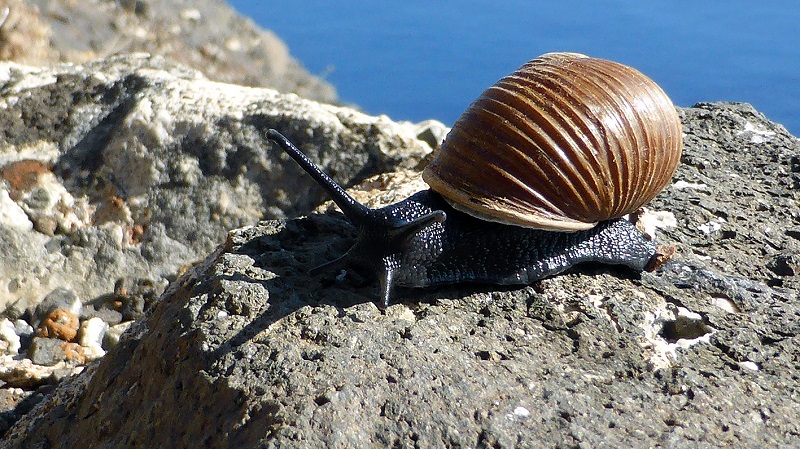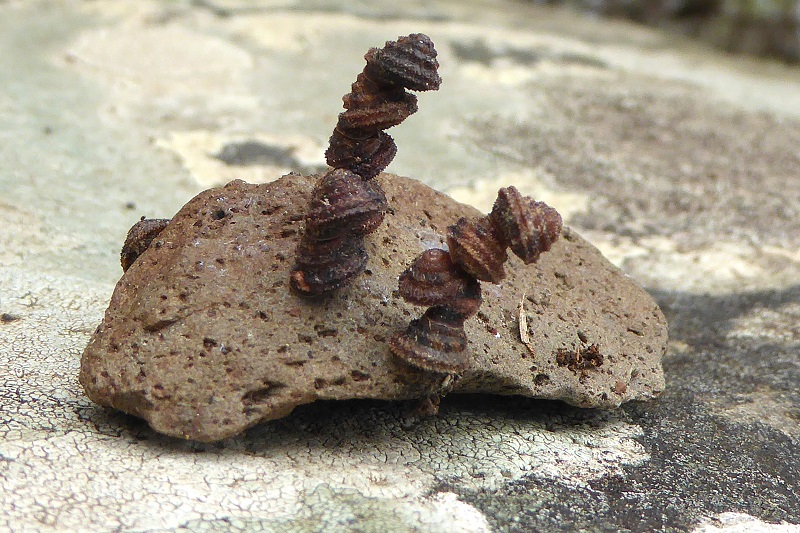The proposed Reserve displays one of the most diverse terrestrial mollusc fauna on oceanic islands, including relic European fauna species from the Tertiary period and an elevated specificity, which can be confirmed with the 82% rate of endemisms, distributed over a vast number of habitats which include the neighbouring islets, all of them with endemic species.
This fauna includes elements that are representative of the three evolutionary echelons of terrestrial gastropods, including slugs (three species, all non-native), semi-slug (four endemic species) and the commonly designated snails (116 species, 97 endemic). The low dispersion capacity of the endemic species, together with the limited area of distribution, makes it vulnerable to environmental changes, the disturbance and habitat loss and consequently, susceptible to extinction. As a result of this, 29 species are listed as threatened according to the IUCN Red List. Eight species are included in annexes II and IV of the Habitats Directive as priority for conservation, representing 28% of all gastropods listed in this structural document.
This insular malacofauna shows significant geographical differentiation as a consequence of distinct geological and climatic past events that were responsible for topographical variations which occurred over time and which resulted in the alteration and substitution of habitats, culminating in the isolation of the fauna. The zones of greater altitude, made up of seven peaks arranged on the east and west of the island are rich in endemisms while the coastal areas are essentially made up of non-native species. The mountains to the west are havens for elements which are characteristic of wet forests like the endemic Leiostyla ferraria, exclusive of Pico de Ana Ferreira, which indicates a presence of wet forest habitats until recent times, as suggested by the presence of other similar forests, like Craspedopoma mucronatum, Paralaoma servilis and Plagyrona placida, in the various fossil deposits on the island. To the east the open space gastropods like the higromiidae of the genus Discula (D. cheiranthicola), Callina (C. rotula e C. bulwerii), Hystricella (H. bicarinata e H. echinulata), and the exclusive Lampadia webbiana, Lemniscia michaudi, Leptaxis wollastoni e Wollastonaria oxytropis, dominate.
There are other species distributed throughout the island appearing not to possess ecological restrictions, like the endemic clausiliidae Boettgeria lowei and the higromiidae Caseolus commixtus, Heterostoma pauperculum and Leptaxis nivosa. The coastal zones, with sandy soil and covered by introduced sparse vegetation, are dominated by non-native species, where Theba pisana, Cochlicella acuta and Rumina decollata are the most abundant. Having undergone cycles of instability of natural and anthropic origin, these areas must have always offered a very poor habitat for endemic species.
Once connected to the main island, the islets have reduced fauna and include faunistic elements common to Porto Santo as well as exclusive species, resulting from the isolation and local speciation, with emphasis on Idiomela subplicata, the only representative of its genus and one of the largest gastropods of the endemic fauna and Wollastonaria turricula, which possesses an unusual turbinate shell.





